Mid-century modern design is a classic style that remains as popular today as it was in the 1950s and ’60s. But what makes it truly exciting is its versatility—you don’t have to stick rigidly to the era’s aesthetic to enjoy its charm. By blending retro elements with contemporary styles, you can create a space that feels fresh, dynamic, and uniquely yours.
When I styled my first mid-century-inspired living room, I started with the basics: a tufted sofa, a walnut coffee table, and a geometric rug. But it wasn’t until I layered in modern accents—a sleek metallic floor lamp and bold abstract art—that the room truly came to life. The mix of old and new gave the space depth, making it feel timeless yet current.
If you’re looking to merge retro and contemporary vibes in your mid-century decor, you’re in the right place. This guide will show you how to create a harmonious blend that celebrates the past while embracing the present.
Why Blend Retro and Contemporary Styles?
Blending styles allows you to:
- Personalize Your Space: Infuse your personality by mixing elements from different eras.
- Keep It Fresh: Avoid a “time capsule” look by incorporating modern trends.
- Add Depth: Layering styles creates visual interest and makes your space feel curated.
1. Start with a Retro Foundation
To create a cohesive design, begin with a base of mid-century modern staples.
Key Mid-Century Features
- Furniture: Look for clean lines, tapered legs, and organic shapes. Sofas, armchairs, and credenzas are excellent starting points.
- Materials: Embrace natural woods like walnut and teak, paired with leather, wool, or linen.
- Lighting: Include retro-inspired fixtures like globe pendants or tripod lamps.
Example:
Anchor your living room with a walnut coffee table and a low-profile tufted sofa. These classic pieces set the stage for layering contemporary elements.
2. Add Contemporary Accents
Once your retro base is in place, bring in modern touches to give the room a fresh twist.
Ideas for Contemporary Accents
- Abstract Art: Large-scale modern art in bold colors or black-and-white adds a striking contrast.
- Metallic Finishes: Incorporate brass, chrome, or matte black accents through lighting, mirrors, or decor.
- Minimalist Decor: Choose sleek, uncluttered accessories like vases or sculptures.
Tip:
Keep your contemporary accents streamlined to complement, not compete with, the retro pieces.
3. Play with Color
Mid-century modern is known for its earthy tones and pops of color, but blending in contemporary hues can elevate your design.
Color Ideas
- Retro Palette: Mustard yellow, burnt orange, olive green, and teal.
- Contemporary Palette: Soft neutrals like beige and cream, paired with deep navy or bold jewel tones.
- The Blend: Use retro colors for large pieces (like sofas or rugs) and contemporary hues for accents (like pillows or art).
Example:
Pair a mustard-yellow armchair with navy blue throw pillows for a fresh take on retro color schemes.
4. Mix Old and New Lighting
Lighting is a powerful way to merge retro and modern styles.
Lighting Tips
- Retro: Add a Sputnik chandelier or globe pendant light for a touch of nostalgia.
- Contemporary: Layer in sleek floor lamps or LED sconces for modern functionality.
- The Blend: Use retro fixtures in central spaces (like above a dining table) and modern lights in secondary areas (like a reading nook).
Picture Gallery
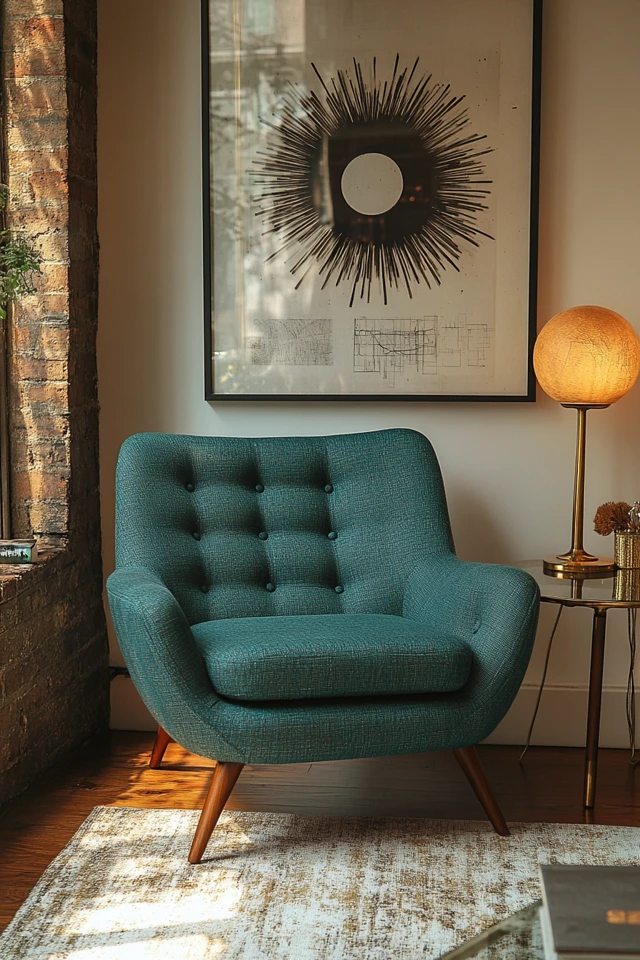
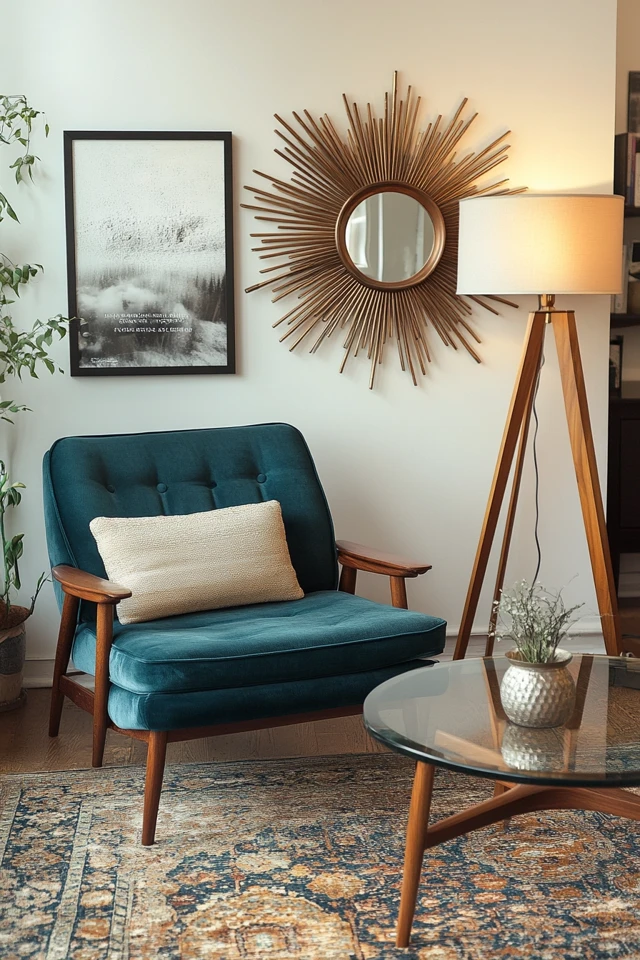
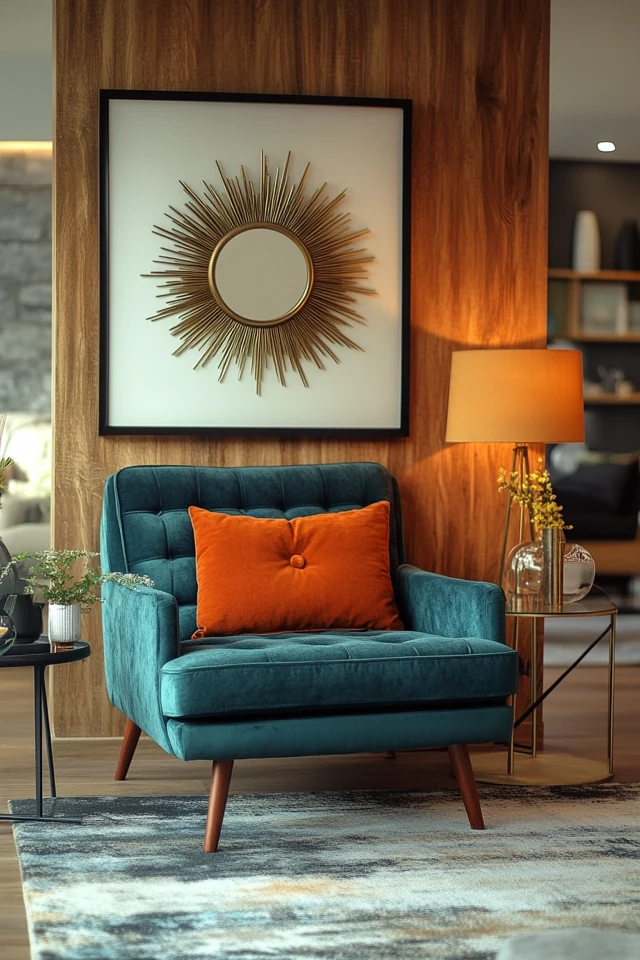
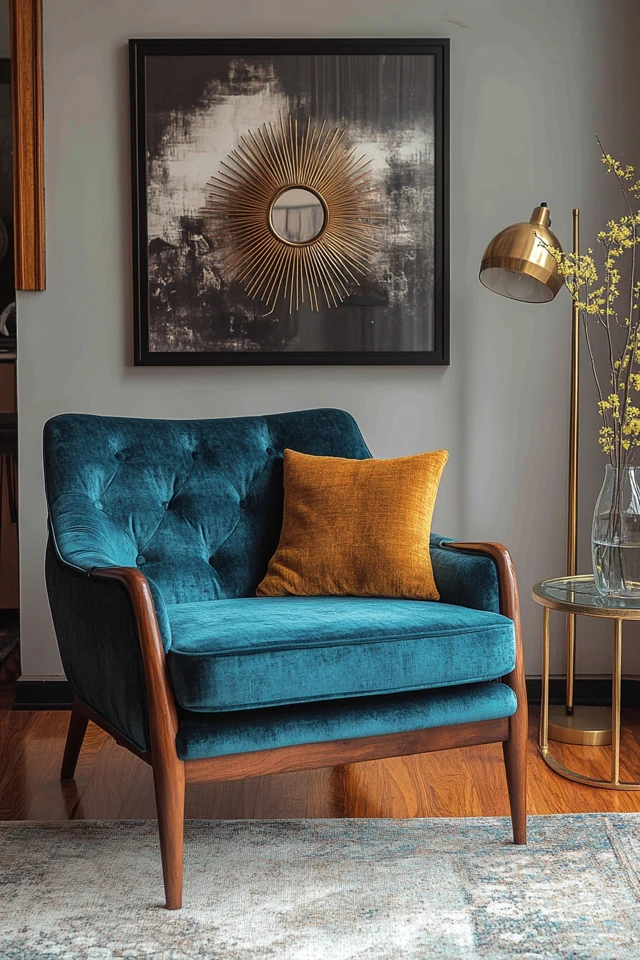
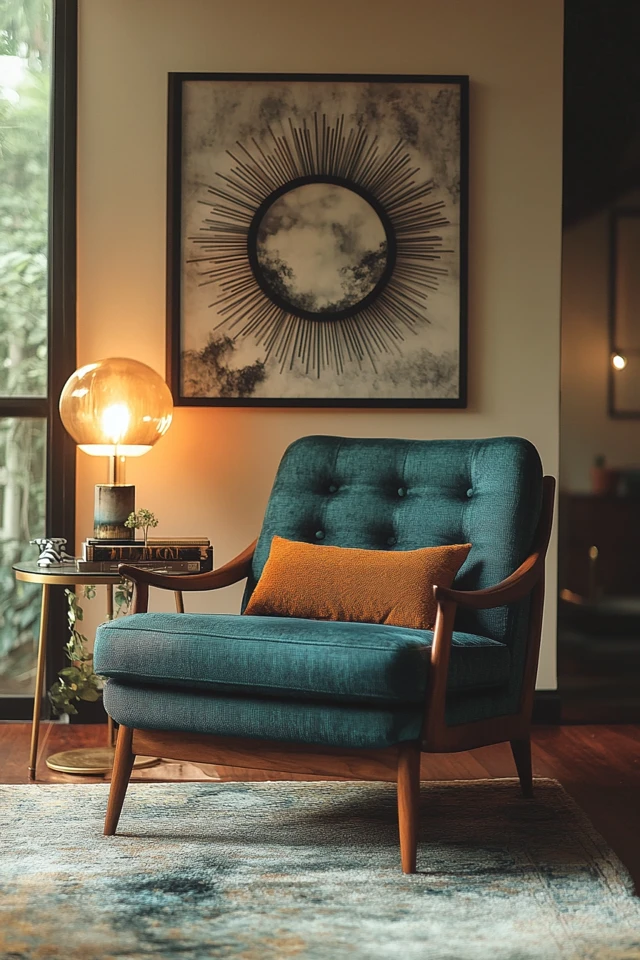
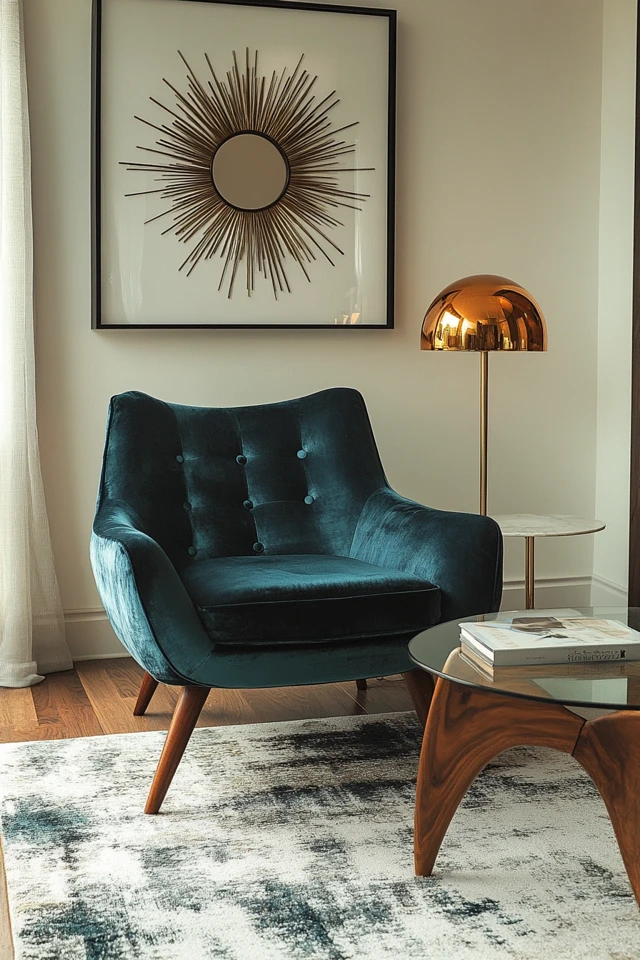
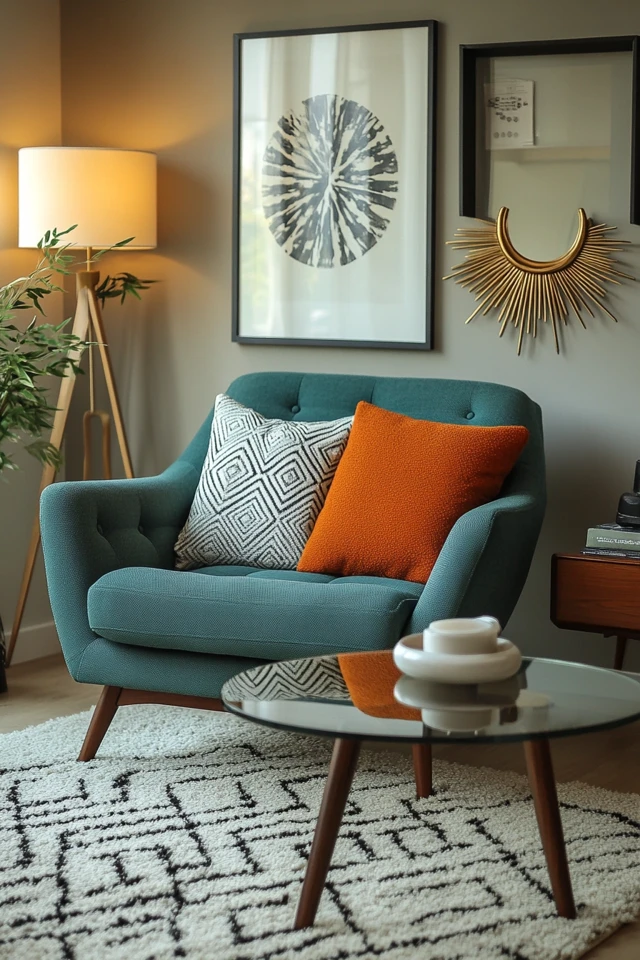
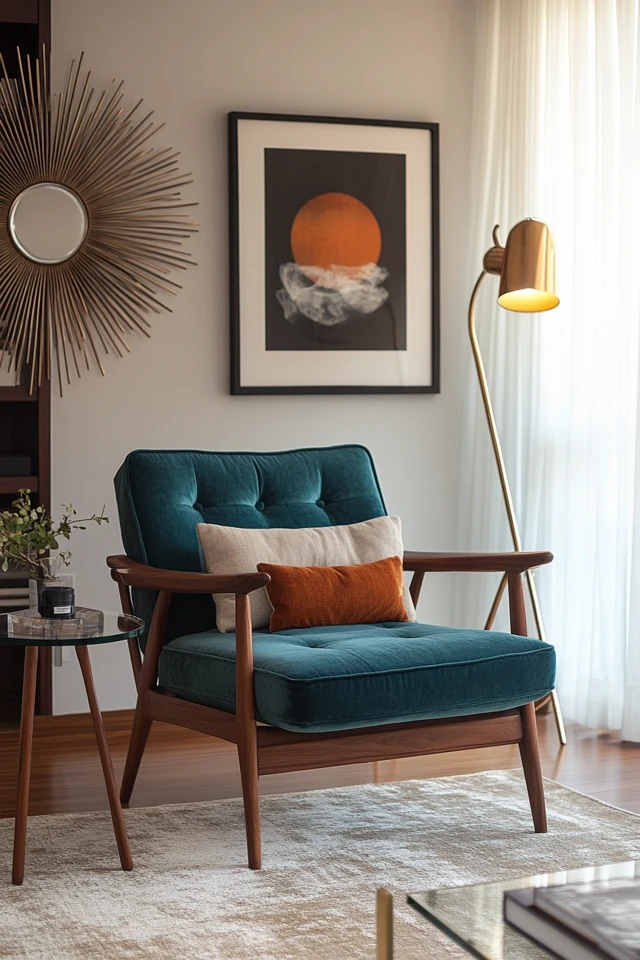
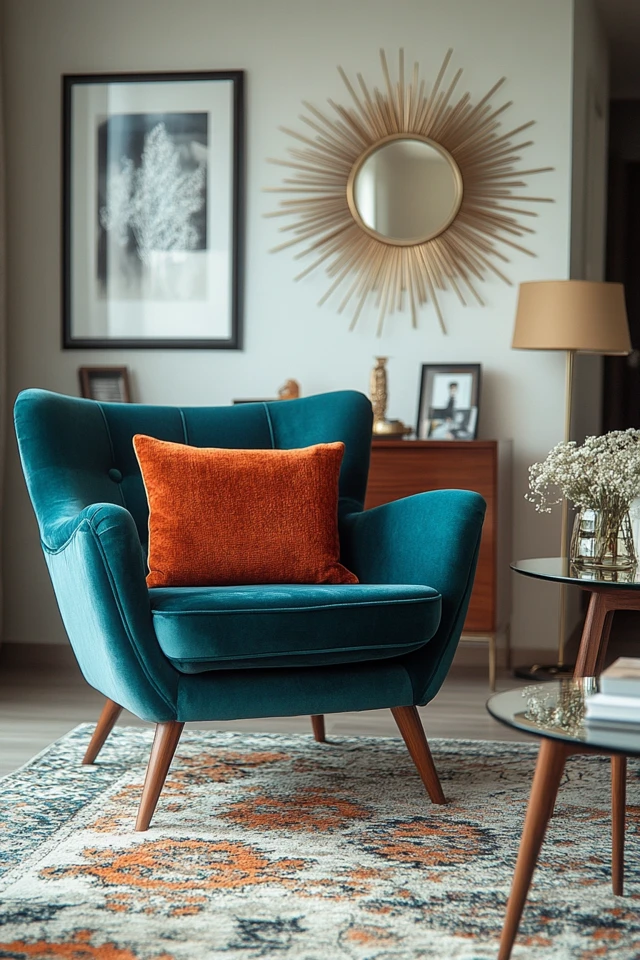
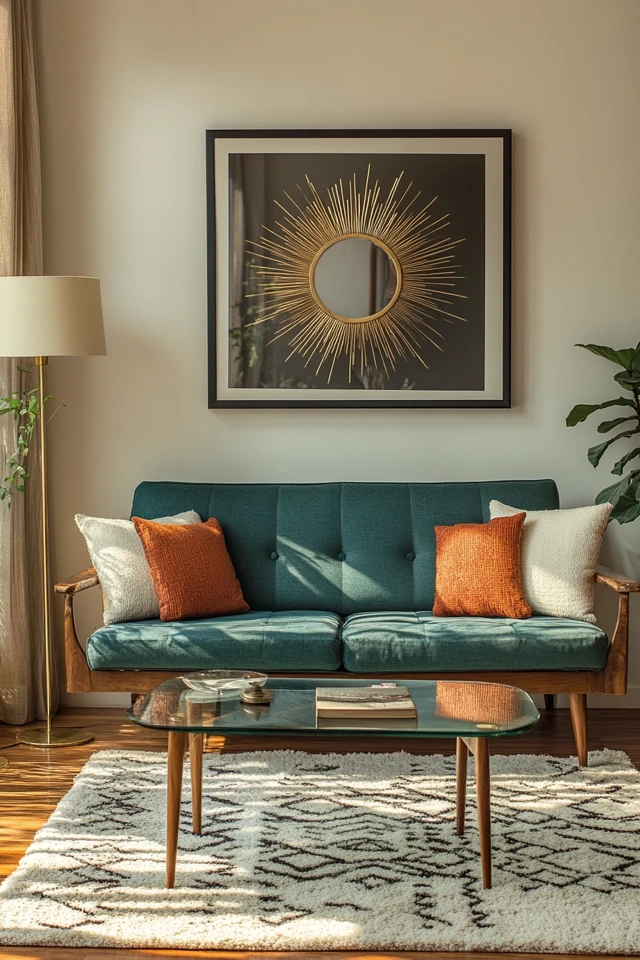

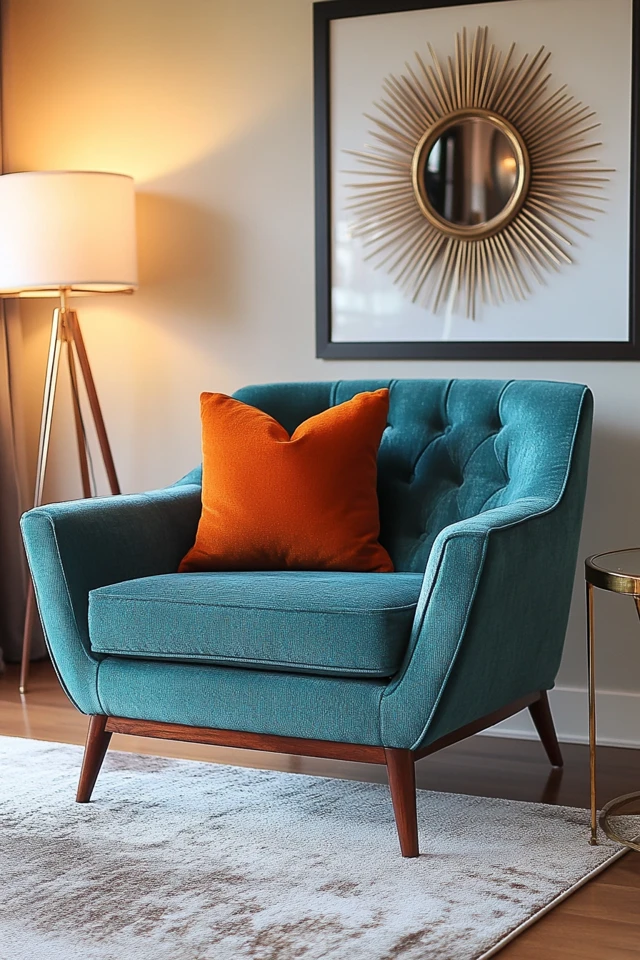
5. Balance Textures and Materials
Combining retro and contemporary styles means blending materials and textures.
Retro Textures
- Natural wood finishes like walnut or teak.
- Upholstery in leather, boucle, or wool.
Contemporary Textures
- Smooth metals like chrome or brass.
- High-gloss surfaces and glass elements.
Tip:
Layer textures by combining a wooden mid-century dining table with sleek acrylic chairs, or a vintage credenza with a glass vase and metallic decor.
6. Use Patterns Strategically
Retro patterns like geometric shapes and abstract prints are hallmarks of mid-century modern decor, but they can be overwhelming if overused.
Pattern Guidelines
- Limit bold patterns to one or two key elements, such as a rug or throw pillows.
- Use contemporary patterns, like minimalist stripes or monochromatic grids, for a modern edge.
Example:
Pair a geometric retro rug with solid-colored contemporary furniture to let the pattern stand out.
7. Blend Furniture Styles
Mixing furniture from different eras is an excellent way to create a balanced look.
How to Blend Furniture
- Combine a mid-century modern sofa with a contemporary coffee table.
- Use vintage dining chairs with a modern glass or marble table.
- Anchor the room with a mid-century credenza and add a sleek, modern armchair.
Pro Tip:
Keep a consistent color palette to unify pieces from different eras.
8. Incorporate Technology Thoughtfully
Modern technology can seamlessly integrate into a mid-century-inspired space without looking out of place.
Tech-Friendly Tips
- Hide cords with cable management systems to maintain a clean look.
- Use modern media consoles in walnut or teak finishes to blend with mid-century furniture.
- Choose smart lighting or voice-controlled devices in neutral colors that don’t clash with your decor.
9. Use Greenery to Bridge the Gap
Plants are timeless and work beautifully in both retro and contemporary spaces.
Best Plants for Blended Styles
- Retro: Fiddle leaf figs, rubber plants, or snake plants.
- Contemporary: Succulents or minimalist arrangements in modern planters.
Tip:
Combine a vintage planter with a modern stand for a cohesive look.
10. Personalize the Space
Adding personal touches is the final step in blending retro and contemporary styles.
How to Personalize
- Display vintage finds, like retro clocks or ceramic vases, alongside modern decor.
- Incorporate family photos in simple, contemporary frames.
- Add books, artwork, or travel mementos that reflect your personality.
Example:
Place a vintage bar cart next to a modern sectional sofa for a functional and stylish juxtaposition.
Conclusion
Blending retro and contemporary styles in mid-century decor is all about finding the right balance. By starting with a retro foundation, layering in modern accents, and thoughtfully combining textures, colors, and patterns, you can create a space that feels cohesive, stylish, and uniquely yours.
For me, this approach has been a game-changer. My home no longer feels stuck in a single era but instead tells a story—one that celebrates the past while embracing the present. Whether you’re designing a living room, dining room, or bedroom, blending retro and contemporary styles lets you create a space that’s as functional as it is beautiful.
So go ahead, mix that mid-century armchair with a sleek marble table, or pair a retro rug with abstract art. Trust me, the result will be a space that’s uniquely you—and completely timeless.
FAQ
Can I mix different wood tones in a retro-contemporary space?
Yes! Mixing wood tones adds depth and interest. Just make sure they complement each other—pair warm woods like walnut with lighter oak or teak for balance.
What’s the best way to incorporate bold retro patterns?
Use bold patterns sparingly, like on a rug or a single piece of furniture. Balance them with solid-colored contemporary elements.
How do I balance retro and contemporary furniture?
Choose one style as the dominant theme (e.g., mid-century for larger pieces) and add contemporary accents like coffee tables, lighting, or decor.
Is mid-century modern still trendy?
Absolutely! Its timeless design and adaptability make it a popular choice that pairs well with other styles.
Where can I find retro and contemporary pieces?
For retro items, try estate sales, vintage shops, or online marketplaces like Chairish. For contemporary furniture, check out stores like West Elm, CB2, or AllModern.

